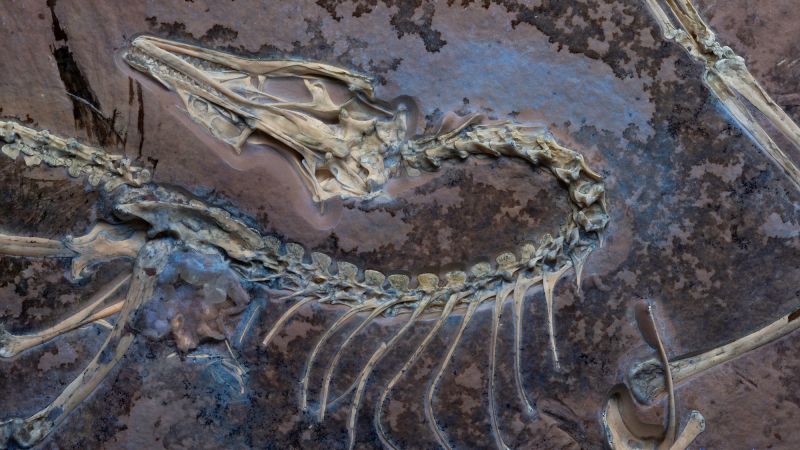In an exciting development within the field of paleontology, a recently acquired specimen of **Archaeopteryx**—the earliest known bird—has shed light on its evolutionary adaptations for flight. Researchers have long been captivated by this transitional fossil, which serves as a critical link between non-avian dinosaurs and modern birds. The arrival of this well-preserved fossil at the **Field Museum of Natural History** in Chicago promises to answer longstanding questions regarding the flight capabilities of this ancient creature, which lived approximately 150 million years ago during the late Jurassic period.
Over the past century, many researchers have debated whether Archaeopteryx was truly capable of powered flight or if it functioned more as a glider akin to some of its feathered dinosaur relatives. The first Archaeopteryx fossils were unearthed in southern Germany 160 years ago, yet only 14 specimens have been discovered to date. Unfortunately, the interest of private collectors has hindered scientific research, as many fossils remained locked away from academic scrutiny. The newly acquired specimen changes that narrative and reinvigorates discussions about the flight evolution of birds.
The **Field Museum**’s recent acquisition is particularly significant as it has revealed previously unseen soft tissues and anatomical structures through advanced techniques such as ultraviolet (UV) light and computed tomography (CT) scans. These findings indicate that the Archaeopteryx possessed feathers conducive to powered flight, bolstering the hypothesis that it was more than just a glider. Notably, the specimen is remarkably well-preserved; lead study author, Dr. **Jingmai O’Connor**, highlighted that while others had suffered from partial crushing, this new find was only missing a single digit and maintained its three-dimensional structure, thus providing a unique glimpse into this critical evolutionary stage.
The extensive work conducted by the museum’s fossil preparators included meticulous scanning and modeling over a period of a year, amounting to approximately 1,600 hours of dedicated effort. These preparators uncovered the earliest evidence of **tertial feathers**—a type of flight feather crucial for powered flight—situated along the humerus between the elbow and body, a discovery that had only been theorized prior to this finding. Given that the feathers had been predicted based on the length of the humerus since the 1980s, this breakthrough firmly establishes that Archaeopteryx was evolving toward the powered flight we observe today in modern birds.
Yet, the surprises found in this specimen do not stop at feather placement. Unique elongated scale shapes on the toe pads suggest that Archaeopteryx foraged on the ground, paralleling behaviors seen in contemporary birds like pigeons and doves. Analysis of the skull bones unveiled insights into **cranial kinesis**—a characteristic that enhances the flexibility and utility of birds’ beaks.
The excitement surrounding this discovery reverberates throughout the scientific community. Dr. **Susan Chapman**, an associate professor at Clemson University, remarked on the significance of the identified tertials, asserting that this suggests Archaeopteryx’s capability of flight. However, she rightly notes that, despite this possibility, the creature probably could only fly short distances, lacking certain adaptations like specialized flight muscles and a pronounced breastbone.
This specimen’s acquisition in 2022 represents a watershed moment for the **Field Museum**, drawing parallels to landmark discoveries such as that of SUE the T. rex. Museum president and CEO, **Julian Siggers**, emphasized its significance upon arrival. Given its uncertain private history and the challenges posed by prior ownership, the success of this acquisition lays the groundwork for future studies that can further unravel mysteries tied to avian evolution.
Ultimately, the Chicago Archaeopteryx is expected to provide a treasure trove of information regarding bird evolution. As Dr. O’Connor notes, further analysis continues, and the true depth of insights from this spectacular specimen has yet to be fully unveiled. The access and preservation of such specimens underscore the importance of prioritizing scientific study over private ownership in paleontology, allowing for comprehensive understanding and appreciation of evolutionary history.
In a broader context, the discoveries derived from this Archaeopteryx underscore the intricate relationships between birds and their dinosaur ancestors, illustrating the complex pathways of evolution that shape life on Earth today. As researchers continue to unveil the myriad stories locked within ancient fossils, they reaffirm that every find holds the potential to deepen our understanding of life’s journey across millions of years.



